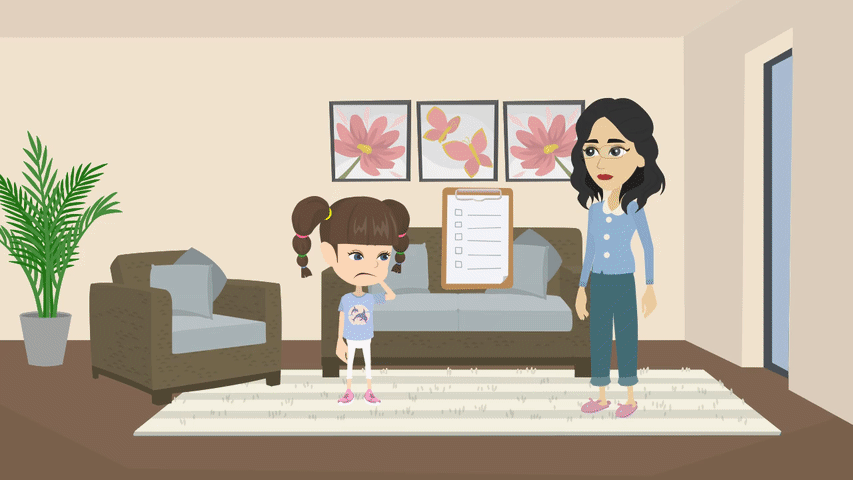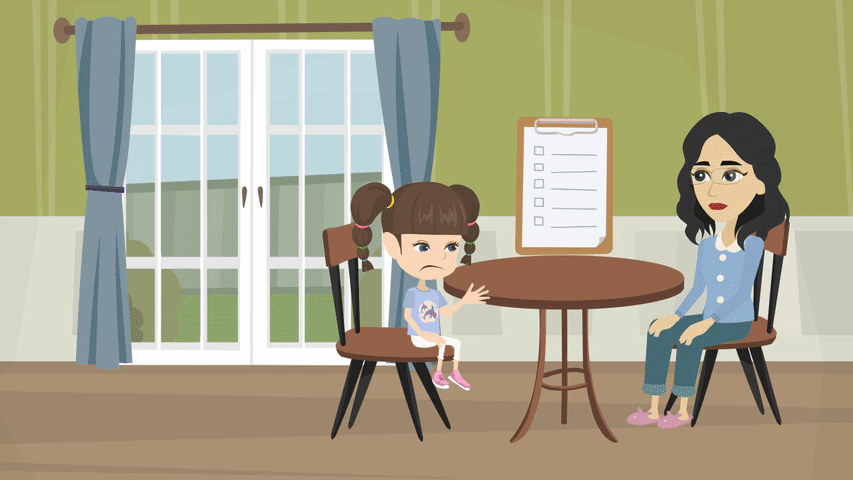Are there mission plans that you still need to work on? This will be the case for most families, and that is okay! Can you anticipate future events that are likely to cause some anxiety (like starting a new school year, moving, going new places, etc.)?
For example, Sally and her mom reexamined Sally’s goals from the beginning of the program and realized that they did not have time to practice public restroom fears and worries. At the beginning, they chose not to prioritize this goal because Sally was going into space in the future and would not be using a public restroom. However, when Sally returns to Earth, she will need to use public restrooms. Therefore, it is still important to work on this goal. To accomplish these goals, Sally and her mom decide to make another mission plan. They brainstorm specific, measurable, and achievable steps to accomplish the mission plan. Items on the mission plan include steps such as: opening the door to a public restroom, walking into a public restroom, opening the stall door, and so on.

Sally and her mom also think about the near and distant future to see what anxieties Sally may face. In the future, Sally will have to give a presentation about Saturn to a group of astronauts. She is nervous about having to get up in front of so many people. Sally and her mom decide that they will use skills learned from the program and develop a mission plan for public speaking in the future to help with her fears and worries.

Sally’s mom has been reflecting on her own behaviors that allow Sally to avoid her fears. For example, giving Sally hand sanitizer when she asks for it, even if she does not need it, or stepping in and ordering for Sally when she feels too uncomfortable to do so. Sally’s mom now understands that this is a very natural and universal instinct, as no one likes to see their child in distress. However, when it comes to anxiety, she understands that this is not helpful in the long-run. The more Sally’s mom allows Sally to avoid uncomfortable situations, the more anxious Sally will feel next time, and the more she will rely on her mom to step in. Keeping this in mind, Sally’s mom has decided to monitor her own behaviors in the future.
Practice Planning for the Future
After working through a few mission plans and reflecting on the experience, Neil’s caregiver sat down to think about future anxiety-related obstacles that Neil might face:
Now, it’s your turn! Think about anxiety-related obstacles that your child might face in the future and complete the following worksheet (PDF version):
1. What are some fears and worries that my child and I want to keep working on, or maybe did not get to work on during the program? Are there any upcoming events, or fears that came up recently, that we would like to work on?
2. How will we tackle these goals? Make a list of specific, measurable, and achievable steps to accomplish. Then, develop a timeline.
3. What skills will my child need in the next few years? What possible anxieties will my child face?








